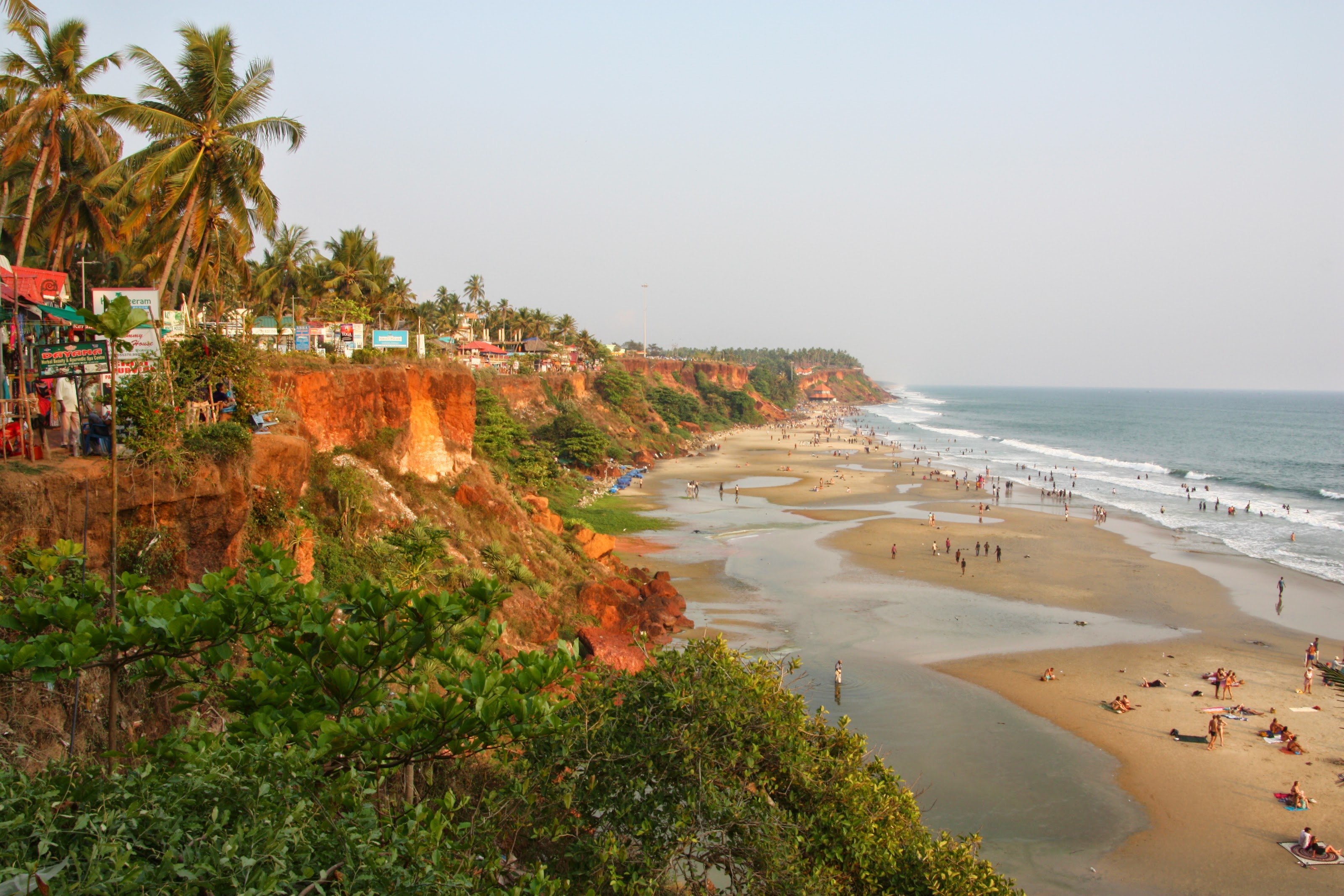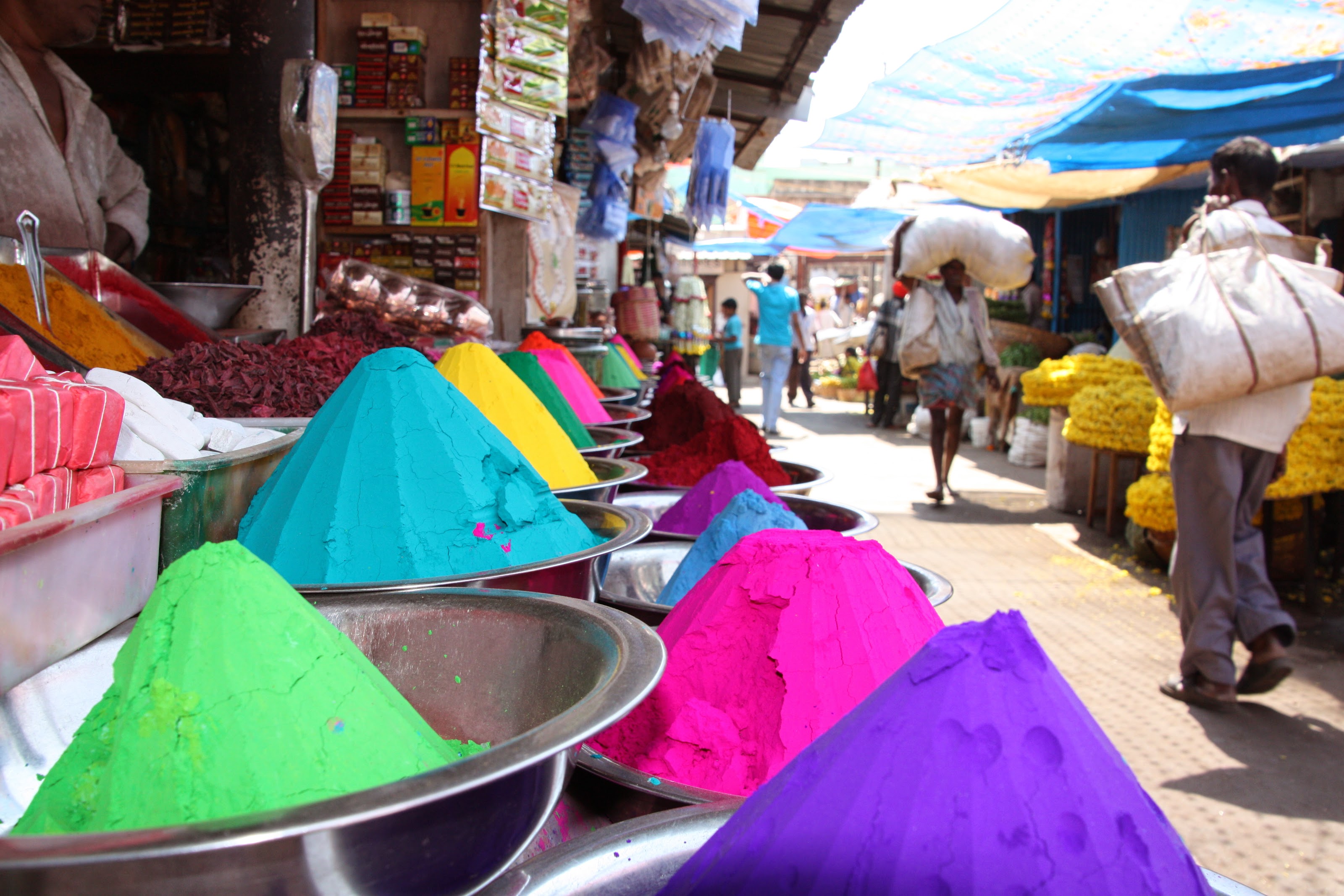For the last ten days in March, I took a vacation inside a vacation and ventured to the southernmost region of the Indian subcontinent. Specifically the states of Tamil Nadu, Kerala, and Karnataka, about the latitude of Panama. I'd heard too much about the food, beaches, ancient temples, and over-the-top palaces to miss out on this part of the country. South India did not disappoint. My first impressions were of endless palm trees, the casual mix of mosques, temples, and churches, and the fact that almost every man I saw was wearing a skirt. I later learned that they are called lungis, which offer great ventilation in the sticky heat. My parents taught me to go "full native" wherever I visit, so a lungi was quickly incorporated into the wardrobe.
It was fiercely hot down there - which I had been warned about - but meant fewer tourist clowns like myself to deal with. This turned out to be a double edged-sword; the local trinket peddlers had fewer outsiders to keep them in business, so I got plenty of attention. Business is good - let me know if you need a straw hat or shell necklace. Here's a little bit about each spot with a few pictures:
Kanyakumari sunrise

Varkala beach from the cliffs
Houseboat. These are the traditional boats of the backwaters, and are now used almost exclusively for tourism. They are everywhere
Fresh fish lunch on a banana leaf. These are tasty
I just like this picture
Spice Garden Guesthouse
Raju happily scaling the coconut trees. He reminds me of a video game character
Santhosh showing me aroud his property. Notice his sweet lungi
Collecting the rubber. They've got this setup on rubber trees all over the place
Rolling out the rubber into sheets that they store or sell
Typical tea plantation
Typical South Indian temple artwork
Rows of colorful mounds of unfamiliar powders - exactly what comes to my mind when thinking Indian markets
Banana salesman frustrated with the saturated market

Mysore Palace at night
It was fiercely hot down there - which I had been warned about - but meant fewer tourist clowns like myself to deal with. This turned out to be a double edged-sword; the local trinket peddlers had fewer outsiders to keep them in business, so I got plenty of attention. Business is good - let me know if you need a straw hat or shell necklace. Here's a little bit about each spot with a few pictures:
Kanyakumari (Cape Cormorin)
They say that Kanyakumari, the last settlement on the mainland, is where three different seas converge: the Arabian Sea, the Bay of Bengal, and the Indian Ocean. You can watch the sun both rise and set over the ocean from the same spot. This is an undeniably picturesque location, "furnishing a sight unequalled in the world" as Ghandi put it. The whole town has a very unique energy; literally, it is a documented radiation hotspot. Two rocks emerge from the water off the shore - one the sight of a temple, the other a giant statue of an ancient Indian poet. Also, like many tourist destinations, the streets are lined with shops and aggressive salesmen. Hidden among them is the Kumari Amman temple, which is over three thousand years old and has a strict no-shirt policy. As a result of these sensational characteristics, many people make a spiritual pilgrimage to Kanyakumari - the end of the Indian world.
Kanyakumari sunrise

What it looks like at the very tip of India
The Mahatma Ghandi memorial building. A hole has been cut into the roof, designed so that once a year on his birthday, the sun shines right through onto the alter where his ashes were held before immersion into the ocean. Pretty neat
Vivekananda rock. In the late 19th century, a Hindu monk named Swami Vivekananda meditated on this rock for three straight days before traveling to the US to create awareness of Hinduism in the West. They built this temple in his honor
Giant statue of Thiruvalluvar, an ancient Indian poet and philosopher
Varkala Beach
Hanging onto the edge of a cliff that surrounds a vast but naturally walled-in beach, Varkala is the kind of place where you arrive planning to stay for two days, then look back three months later wondering where the time went. The atmosphere is one of active relaxation - everyone is making an effort to be as laid back as possible. Varkala is also a bit of a Western oasis; it seems to have a magnetizing effect on eccentric Europeans. I met some truly fascinating people here, almost all non-Indians who had been here for a few months if not years. As you can imagine, the folks here are really easy to get along with, and after a few hours I was having beers with new friends from a dozen different countries. You could power up a jumbotron with the positive energy in this place. Three days of frisbee throwing, swimming in the ocean, and eating mangos sliced by a warm hearted local woman who sings the words "eating, eating, yum, yum" while you enjoy them. It's not difficult to see how you can get stuck here.
Indian side of the beach. There is a pretty clear separation between the local beach zone and the foreign zone, enforced by the lifeguards. This struck me as a little strange, but I gues it's necessary to avoid awkward cultural situations
Notice the fully clothed Indian women
Now the half naked Westerners on the other side
Lifeguard calling it a day for the swimmers. The guy splayed out on the ground there has the right idea
Kerala Backwaters and Cochin
The backwaters of Kerala are a vast network of brackish lakes and canals that played a big role during the heyday of the spice trade. While the industry focus has shifted over the years, the area remains serene and beautiful. Many people must feel the same way because Alleppy, the jumping off point for most boat rides in the area, is overrun with tourism. Without any plans or reservations, I got completely bamboozled (unknowingly thrown into an overpriced trip) within minutes of disembarking the train. It was fine; a few hours floating peacefully through a tropical bayou is worth a few extra bucks. It's also necessary to step back sometimes and realize that "expensive" in India is very reasonable compared to most other places. I stayed that night in Fort Cochin, an old Dutch settlement made famous for its spices, essential oils, and variety of cultural influences.
It looks just like this for hundreds of miles
Getting from A to B the old-fashioned way
This picture is here to point out two things: one is that the villagers will do anything to attract tourists, including the ethically questionable domestication of dangerous birds of prey. The other is the fashionable lungi (man-skirt) he's wearing
Houseboat. These are the traditional boats of the backwaters, and are now used almost exclusively for tourism. They are everywhere
Fresh fish lunch on a banana leaf. These are tasty
I just like this picture
Chinese fishing nets of Fort Cochin at sundown
Cardimum, nutmeg, tumeric, star spice - a few of the many spices that put Cochin on the map
Front gate of a Jain temple
A few steps away from this church is a mosque, a synagogue, and a temple
Spice Garden, Wayanad
Through a puzzling series of misunderstandings, I found myself in Wayanad, a rural "hill station" (high-elevation agricultural area) dotted with spice and tea plantations. I planned on visiting a wildlife sanctuary to see some elephants, maybe a tiger, but ended up here in the middle of the night after 13 hours of bus rides. I didn't realize that I was at the wrong Spice Garden guesthouse until I laid my head down to sleep, at which point I just giggled to myself until passing out from exhaustion. I made lemonade out of it though, and it turned out to be a highlight of the trip. The hard working family man in charge, Santhosh, was eager to show me around his property and make me feel at home. The food here was great, all served on banana leaves and straight from his farm. His dad is also a complete boss - we planted banana trees and shucked coconuts one morning. Glad I fell into this place.
The only elephant I saw the whole trip. Got this shot of him as my bus flew by
Raju happily scaling the coconut trees. He reminds me of a video game character
A more frightening shot of Raju creeping through the shadows
I got up there myself with these cable-pulley tree climbing machines
Santhosh showing me aroud his property. Notice his sweet lungi
Collecting the rubber. They've got this setup on rubber trees all over the place
Rolling out the rubber into sheets that they store or sell
The end of an unplanned adventure
Mysore
Opulent. This is the all-encompassing word for Mysore, the royal city of South India. It's known for it's pure silk and high quality sandalwood oil. It was the capital city of a large kingdom for six centuries, so they know how to do it right.
Mysore Palace
I can't remember what this place is called, but they guy buried inside killed a tiger with his bare hands
Rows of colorful mounds of unfamiliar powders - exactly what comes to my mind when thinking Indian markets
Banana salesman frustrated with the saturated market

Mysore Palace at night
That was a big one, thank you for sticking through it. I only have one month left here, let's hope I can make it count.


































No comments:
Post a Comment